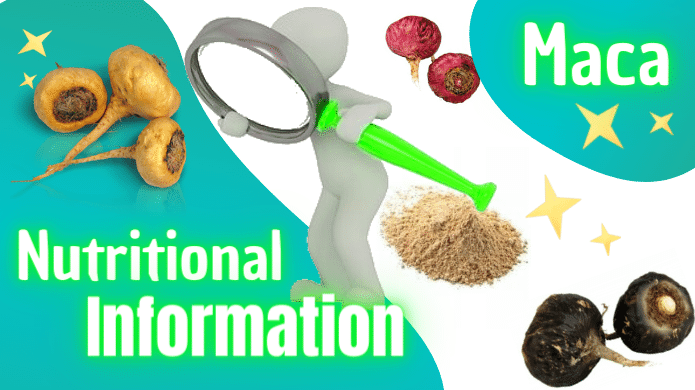
In the traditional method, maca roots are collected manually when the top green of the plant begin to turn yellow. And f resh roots are generally only accessible from farmers who live in close proximity to the plant’s production. Powder, capsules, and pieces in vacuum packs are commonly available at specialized food stores in the United States.
Maca root was long consumed as a daily food by indigenous tribes, but it came to fame as a major medicinal plant during the reign of the Inca empire, while its warriors took it to release energy before engaging in wars.
It is an old peruvian food, apreciated for both its culinary and medicinal properties. The plant, also known as Peruvian ginseng, is a genuine adaptogen and stamina enhancer that has been shown to promote metabolic activities in the body as well as to optimize wellbeing and health.

Information about the nutritional value of maca

Growing in popularity as nutritional supplements, maca products are used most for aphrodisiac reasons and to improve reproductive health, endurance, and stamina.

Parts of the maca plant have long been thought to improve one’s energy levels. The ancient Incas utilized maca to promote fertility also as an aphrodisiac, as well as to manage menopausal and menstrual symptoms, among other purposes.

The calorific value of maca root is on the lower end of the scale. Given its high starch content, fresh maca has a few more calories than some other taproots. 200 grams of dry maca has around 650 calories, which is comparable to the caloric content of other foods such as rice.

Neither fresh nor dried maca contain any cholesterol, and both contain only tiny quantities of fat. Yet, the root includes a number of significant phytochemicals, minerals, and vitamins, all of which help to increase energy, freshness, and overall wellbeing in the body.

Aside from the principal ingredients, the root and other plant parts are rich in anthocyanin pigments, alkaloids, and other elements that are beneficial to one’s health.

It has been shown by researchers working on maca that specific active chemicals, such as macamides and macaenes, are principally responsible for its beneficial physiological effect on human health.

Peruvian maca contains a remarkably high concentration of vitamins and minerals. In reality, several of these minerals are an essential component of maca nutrition, where they serve as co-factors for enzymes that are involved in metabolic activities.

Is maca a safe root for everyone to consume?
Small amounts taken once or twice a day are proven to be safe for the majority of people, with no significant negative effects.
Some people, on the other hand, should proceed with care. Those with thyroid problems, for example, are recommended to avoid cruciferous vegetables such as maca. This is due to the presence of goitrogens in this family of plants, which have the potential to interfere with the proper operation of the thyroid gland.
Maca should not be consumed by women who are pregnant or nursing. And if you are thinking about making significant dietary changes or want to boost your diet, you should first check with your doctor or a dietitian to verify that you are not putting your health in danger.
![]()

✓ Related…
☰ Why maca is called peruvian ginseng ⇗
☰ Pros and cons of peruvian maca ⇗
☰ Maca for Anxiety and Depression in Women ⇗


